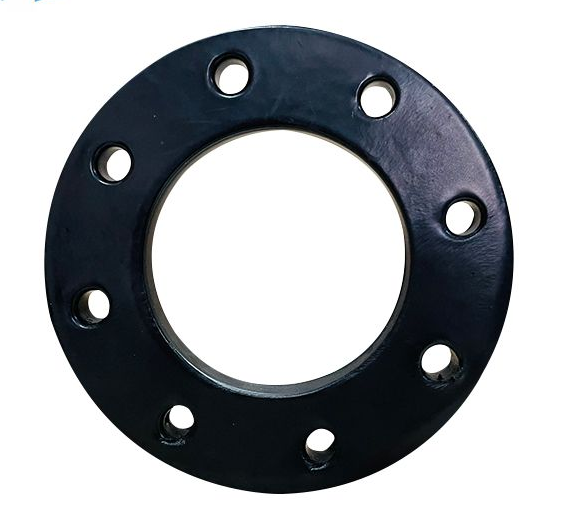-
Cangzhou Yulong Steel Co., Ltd.
-
Phone:
+86 13303177267 -
Email:
admin@ylsteelfittings.com
- English
- Arabic
- Italian
- Spanish
- Portuguese
- German
- kazakh
- Persian
- Greek
- French
- Russian
- Polish
- Thai
- Indonesian
- Vietnamese
- Zulu
- Korean
- Uzbek
- Hindi
- Serbian
- Malay
- Ukrainian
- Gujarati
- Haitian Creole
- hausa
- hawaiian
- Hebrew
- Miao
- Hungarian
- Icelandic
- igbo
- irish
- Japanese
- Javanese
- Kannada
- Khmer
- Rwandese
- Afrikaans
- Albanian
- Amharic
- Armenian
- Azerbaijani
- Basque
- Belarusian
- Bengali
- Bosnian
- Bulgarian
- Catalan
- Cebuano
- China
- China (Taiwan)
- Corsican
- Croatian
- Czech
- Danish
- Esperanto
- Estonian
- Finnish
- Frisian
- Galician
- Georgian
- Kurdish
- Kyrgyz
- Lao
- Latin
- Latvian
- Lithuanian
- Luxembourgish
- Macedonian
- Malgashi
- Malayalam
- Maltese
- Maori
- Marathi
- Mongolian
- Myanmar
- Nepali
- Norwegian
- Norwegian
- Occitan
- Pashto
- Dutch
- Punjabi
- Romanian
- Samoan
- Scottish Gaelic
- Sesotho
- Shona
- Sindhi
- Sinhala
- Slovak
- Slovenian
- Somali
- Sundanese
- Swahili
- Swedish
- Tagalog
- Tajik
- Tamil
- Tatar
- Telugu
- Turkish
- Turkmen
- Urdu
- Uighur
- Welsh
- Bantu
- Yiddish
- Yoruba

Nov . 15, 2024 03:19 Back to list
flanged elbow fitting
Understanding Flanged Elbow Fittings
Flanged elbow fittings are crucial components in piping systems, widely utilized in various industries, including oil and gas, water treatment, and chemical processing. Their primary function is to change the direction of fluid flow within the piping network, ensuring that fluids can navigate around obstacles and connect various sections of a piping system efficiently.
A flanged elbow fitting is characterized by its unique design, featuring a flanged end that allows for secure bolted connections to other piping elements. Unlike standard elbows, which are typically welded to pipes, flanged elbows provide the added advantage of easy disassembly. This feature is particularly beneficial for maintenance and inspection purposes, as it enables engineers to access the internal sections of the piping system without extensive labor.
Flanged elbows come in several angles, with 90-degree and 45-degree options being the most common. The choice of angle is critical, as it directly affects the flow characteristics and pressure drop within the system. A 90-degree elbow, for example, allows for a sharp turn, while a 45-degree elbow provides a gentler curve, which can minimize turbulence and pressure loss.
flanged elbow fitting

Material selection is also vital when it comes to flanged elbow fittings
. They are available in various materials, including carbon steel, stainless steel, and plastic, allowing engineers to choose the right one based on the application’s specific requirements. Factors such as the type of fluid being transported, temperature, and pressure ratings must be considered when selecting the appropriate material to ensure durability and longevity.The dimensions of flanged elbow fittings adhere to standardized specifications, such as ANSI/ASME and API. These standards help guarantee compatibility across different piping systems, making it easier for manufacturers and engineers to design and implement effective piping solutions. The flanges themselves are designed to accommodate gaskets, which prevent leakage and maintain pressure integrity within the system.
Installation of flanged elbow fittings typically involves aligning the flanged ends with corresponding flanges on pipes or other fittings, followed by bolting them together. Proper alignment and torqueing of bolts are essential to avoid stress on the pipes, which can lead to failures or leaks.
In summary, flanged elbow fittings play a vital role in modern piping systems, ensuring the efficient transport of fluids while allowing for flexibility in design and maintenance. Their ability to provide secure connections and facilitate changes in direction makes them indispensable in various industrial applications. Understanding their design, material options, and installation processes is essential for engineers and technicians involved in the design and maintenance of piping systems.
Latest news
-
ANSI 150P SS304 SO FLANGE
NewsFeb.14,2025
-
ASTM A333GR6 STEEL PIPE
NewsJan.20,2025
-
ANSI B16.5 WELDING NECK FLANGE
NewsJan.15,2026
-
ANSI B16.5 SLIP-ON FLANGE
NewsApr.19,2024
-
SABS 1123 FLANGE
NewsJan.15,2025
-
DIN86044 PLATE FLANGE
NewsApr.19,2024
-
DIN2527 BLIND FLANGE
NewsApr.12,2024
-
JIS B2311 Butt-Welding Fittings LR/SR 45°/90° /180°Seamless/Weld
NewsApr.23,2024











